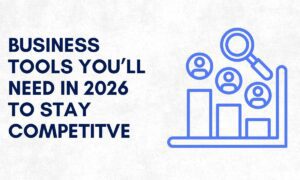In business, it’s not if a crisis will hit—it’s when. Whether it’s a storm that floods your office, a hacker stealing your data, or a supplier suddenly going dark, disasters can flip everything upside down. But there’s hope—and it starts with a strong business resiliency program. These programs don’t just help companies survive. They help them bounce back stronger.
When chaos strikes, emotions run high. Panic sets in. But a plan—one crafted with care—can turn fear into focus. That’s the heart of resilient business strategies. It’s about building a foundation that doesn’t crack under pressure.
The Real Risks Businesses Face Today
Tech Disasters That Paralyze Operations
Every business today runs on technology. But what happens when the system fails? A crashed server. A broken payment system. A cyberattack. These problems don’t just cause delays—they break trust and lose money.
Cybersecurity breaches, like the one that hit Target in 2013, prove that even big players are vulnerable. A business resiliency program prepares for this with regular backups, secure cloud systems, and fast-response protocols.
Supply Chains Hanging by a Thread
The COVID-19 pandemic showed how fragile global supply chains can be. When one link breaks, the whole chain suffers. Items don’t arrive. Customers get frustrated. Sales drop. A resiliency program helps spot weak links early and builds backup plans.
Having multiple suppliers, working with local sources, or storing extra inventory can help. These choices might seem small, but they save big when trouble comes.
Crafting a Business Resiliency Program That Works
Start With a Risk Checkup
You can’t fix what you don’t see. The first step in building resilience is to look at what could go wrong. Natural disasters, tech crashes, employee strikes, or even political changes can impact your business.
Hold team meetings. Make lists. Use tools to spot threats. Understanding your risk helps you build a better plan.
Create Emergency Action Plans
A business resiliency strategy isn’t just words on paper—it’s action. Your team should know what to do when things go wrong. Who calls the shots? Who talks to clients? Who gets the data backed up?
Run drills. Have checklists. Make sure everyone knows their part. When the real emergency comes, there’s no time to guess.
Protect Your People First
Businesses are made of people. Without them, the systems stop. A solid resiliency plan protects employee safety and mental health.
Offer remote work options during disasters. Give access to counseling if needed. Keep communication open and honest. When people feel safe, they work better—even under stress.
Stories That Show the Strength of Resiliency
How a Small Bookstore Survived a Flood
In 2022, a historic flood hit a town in the Midwest. One local bookstore lost power, stock, and its front entrance. But thanks to a plan they made just six months earlier, they moved operations online within 48 hours. Orders kept coming in. Customers showed support. The store reopened in a week.
They had cloud backups, social media ready, and a list of loyal suppliers. This is what business continuity looks like in real life.
A Manufacturing Firm and the Power of a Backup Generator
Another business—an old manufacturing firm—had prepared for a blackout. When the grid went down during a snowstorm, their backup generator kicked in. Machines kept running. Employees stayed safe. Orders shipped on time. That backup saved their season and protected dozens of jobs.
The Emotional Weight of a Business Crisis
Fear, Guilt, and Responsibility
When a business hits a crisis, leaders often feel guilt. “I should’ve seen this coming.” But no one can predict every disaster. What they can do is prepare.
A resiliency program gives peace of mind. It replaces guilt with action. It shows employees, partners, and customers that the business cares.
Hope Through Action
Even in the darkest times, a plan brings light. Every step—no matter how small—builds momentum. Whether it’s sending updates to your team or switching systems in a pinch, each move forward counts.
Long-Term Benefits of Business Resiliency
More Than Just Survival—Growth
Businesses that prepare aren’t just surviving—they’re growing. They gain trust. Customers know they can depend on them. Partners want to stick around. Employees feel proud.
Amazon, Apple, and Walmart have shown how bouncing back fast can lead to bigger wins. Their strategies include supply chain visibility, real-time data monitoring, and quick communication.
A Competitive Edge in a Tough Market
Many companies only think about growth and profit. But when something bad happens, only the prepared ones stay standing. That’s why resilience gives you an edge. It turns stress into strategy. It makes your brand stronger than the storm.
Conclusion: It’s Not About Fear—It’s About Power
Disasters don’t wait. They don’t knock politely. But businesses that build resiliency programs don’t fear them. They face them.
A business resiliency program is more than a backup plan. It’s a promise to your people, your customers, and yourself. A promise that no matter what hits, you’ll find your footing. You’ll rise again. And sometimes, you’ll rise even higher.
If your business hasn’t started building one yet—now is the time. Because tomorrow may not wait.



































